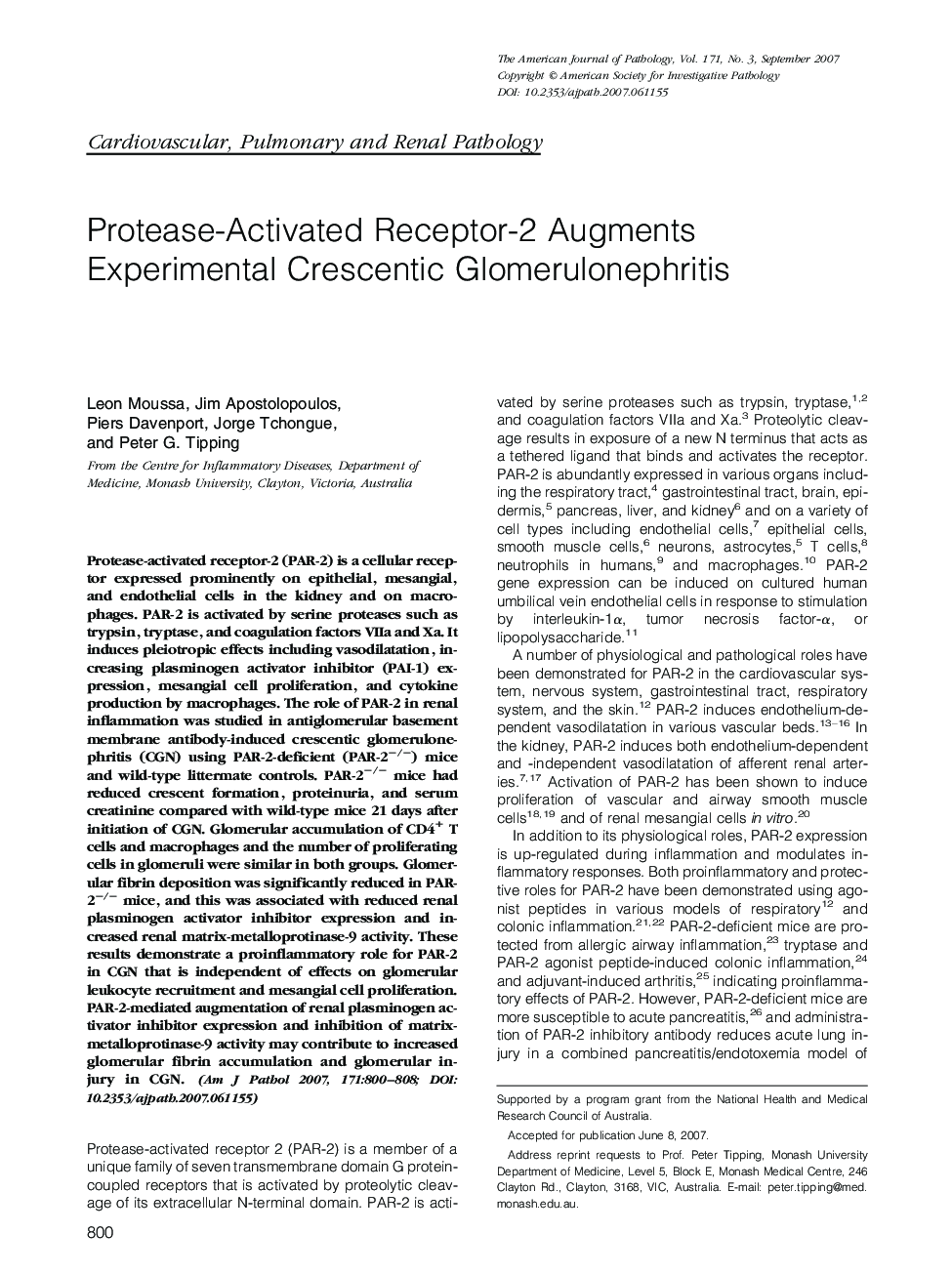| Article ID | Journal | Published Year | Pages | File Type |
|---|---|---|---|---|
| 5939078 | The American Journal of Pathology | 2007 | 9 Pages |
Abstract
Protease-activated receptor-2 (PAR-2) is a cellular receptor expressed prominently on epithelial, mesangial, and endothelial cells in the kidney and on macrophages. PAR-2 is activated by serine proteases such as trypsin, tryptase, and coagulation factors VIIa and Xa. It induces pleiotropic effects including vasodilatation, increasing plasminogen activator inhibitor (PAI-1) expression, mesangial cell proliferation, and cytokine production by macrophages. The role of PAR-2 in renal inflammation was studied in antiglomerular basement membrane antibody-induced crescentic glomerulonephritis (CGN) using PAR-2-deficient (PAR-2â/â) mice and wild-type littermate controls. PAR-2â/â mice had reduced crescent formation, proteinuria, and serum creatinine compared with wild-type mice 21 days after initiation of CGN. Glomerular accumulation of CD4+ T cells and macrophages and the number of proliferating cells in glomeruli were similar in both groups. Glomerular fibrin deposition was significantly reduced in PAR-2â/â mice, and this was associated with reduced renal plasminogen activator inhibitor expression and increased renal matrix-metalloprotinase-9 activity. These results demonstrate a proinflammatory role for PAR-2 in CGN that is independent of effects on glomerular leukocyte recruitment and mesangial cell proliferation. PAR-2-mediated augmentation of renal plasminogen activator inhibitor expression and inhibition of matrix-metalloprotinase-9 activity may contribute to increased glomerular fibrin accumulation and glomerular injury in CGN.
Related Topics
Health Sciences
Medicine and Dentistry
Cardiology and Cardiovascular Medicine
Authors
Leon Moussa, Jim Apostolopoulos, Piers Davenport, Jorge Tchongue, Peter G. Tipping,
